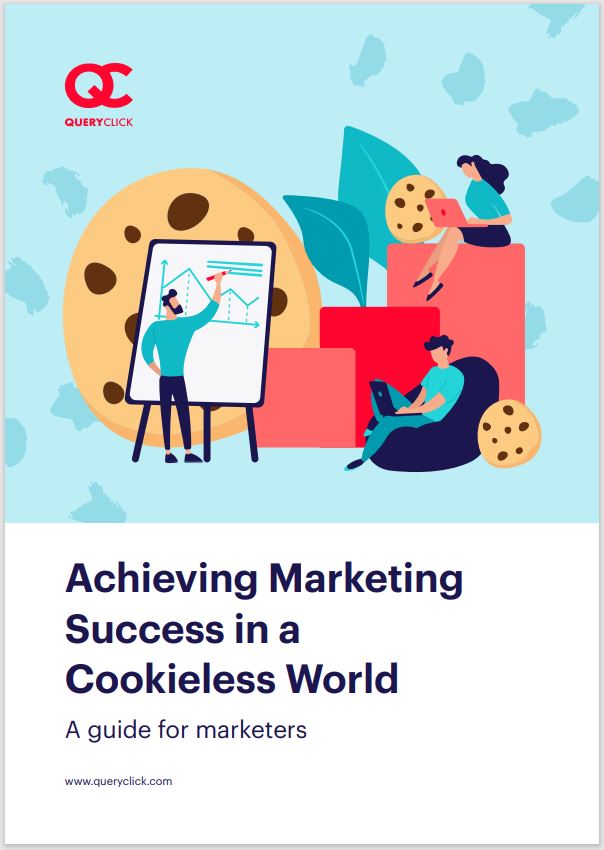How to Ensure Your Top of Funnel Marketing Is Fairly Attributed

In an overcrowded digital ecosystem, a lot of brands are struggling to get seen.
For most, it can be easy to throw money at cold audiences and hope that something sticks. But as marketing budgets are under increased scrutiny, having a low-cost strategy that’s helping to drive revenue is essential.
That’s where top of funnel (TOFU) marketing comes in.
But not every business understands the true value of these campaigns – and that’s down to a number of differing factors. But mainly, if you don’t have proper measurement in place, you’ll never know the real impact of your TOFU marketing efforts.
In this blog, we’ll take a look at why that’s the case and cover:
- How searcher behaviour has changed
- How to get buy-in for your top of funnel campaigns
- Why top of funnel marketing campaigns aren’t accurately attributed
Before we dive into how to ensure your TOFU marketing activities are getting enough credit, let’s take a quick look at how things have changed – especially in the past 18 months.
How searcher behaviour has changed
There’s no doubt about it. If you want to get found online, you need to have content on your website.
But ranking for your key search terms is about more than just having the right to rank. You need to be creating content that gives you the right to rank well.
As the pandemic hit, brands saw a shift in consumer search behaviour: people weren’t looking for information on how to buy x, y and z. Instead, they were turning to search engines for advice and vital information.
The businesses that are in-tune with their audience and customers are the ones who realised this and shifted their focus away from being a purely sales-driven company to providing searchers with the information they were looking for.
Not only would this shift in focus help to reap SEO benefits and drive traffic to the website, but it would increase trust and brand awareness so that when the time did come to purchase, it’s your brand that would be remembered. In fact:
59% of UK customers said they would go out of their way to support brands that showed a social or charitable focus during the pandemic
During a webinar with Retail Gazette, QueryClick CEO, Chris Liversidge and Nick Dover, Group Digital Acquisition Lead for Sally Beauty & Salon Services, discussed how the change in consumer behaviour during the pandemic meant a shift in digital strategies:
“We gave up a lot more space to content than we normally would. Content is often a bit of a sideshow to products that you’re pushing. But priorities changed a little bit [during the pandemic]. We pushed content a lot more as people were spending a bit less but they were desperate to know more.”
And with bottom of funnel activity becoming more saturated, major updates like iOS14 significantly reducing targetable audiences on Facebook and the impending removal of third party cookies impacting retargeting campaigns, spending more time on TOFU activity could be the key to breaking through the noise.
How to get buy-in for your top of funnel campaigns
Okay, so it’s pretty clear that TOFU content and campaigns are important – but you already knew that.
But at the end of the day, your business (and its stakeholders) want to see sales. And we all know how difficult it can be to directly correlate revenue to content – but we’ll look into that more in a little bit.
Proving the value of TOFU content is a tough task at the best of times but moreso as, according to QueryClick’s own research:
68% of Marketing Directors report that internal stakeholder pressure actively restricts the option to employ marketing activity with longer term payback
So, how do you relay the crucial role of TOFU campaigns in a way that makes stakeholders happy to shift some of the marketing focus away from traditional activity that drives sales to spend more time on what’s often seen as ‘the fluffy stuff’?
3 tips to help sell your top of funnel campaigns
1. Create a holistic strategy
Creating a holistic strategy means you have to align with, and support, other marketing channels.
There’s power in numbers. So, by showing how your upper funnel strategy fits in with other marketing activity and will work to drive the overall effectiveness of the marketing function, it will position it as a vital piece of the puzzle.
It’s important to remember that not all pieces of TOFU content will drive sales or should be product focussed. But with proper measurement across your entire strategy as well as clear objectives, you can define the role of TOFU content to plan and execute it effectively so that cross channel synergies are improved.
2. Speak their language
It can be easy to get stuck in the weeds when pitching a new campaign idea or strategy but if you want the business to understand why it’s important, you need to remember you’re not talking to other marketers.
Forget discussing things like organic traffic and ranking opportunities and switch up your language to focus on revenue opportunities or capitalising on competitor weaknesses. That’s sure to catch their attention.
Remember to relate your strategy to the overall company goals to show that this will benefit the whole company, not just your department.
3. Know how to report on TOFU content
As we touched on earlier, your business wants to see how every marketing activity is working to generate sales and boost ROI.
If you want to show the true value of these campaigns, you need to sort the vanity metrics from the ones that really relate to ROI.
Metrics such as:
- Bounce rate
- Organic traffic
- Pages per session
- Time on site
Can be great indicators but ultimately, mean nothing in terms of ROI. And you can bet that your stakeholders could care less about them too.
Instead, focus on actions that your campaigns drove that show intent, such as:
- Request a demo
- Purchase from your site
- Download gated assets
- Subscribe to your newsletter
But knowing if your TOFU campaigns led to any of the above actions and actually being credited for playing their part relies on having a tool which can do this simply and accurately.
Which takes us nicely into the next section…
Why top of funnel marketing campaigns aren’t accurately attributed
It’s fairly common knowledge that Last Click isn’t a trustworthy source for reporting on marketing activity, but many businesses still rely on it for their reporting.
Why? Well, we can’t speak for other marketers but it may have something to do with it being the default attribution model used by some of the largest attribution vendors – Google Analytics and Adobe Analytics.
So, what are the alternative to Last Click? Well, honestly, other attribution models aren’t much better.
Single-touch models, which treat every touchpoint as an individual event in a silo, make it impossible to get a complete picture of the entire customer journey and how each marketing activity has influenced that conversion.
And when you can’t understand the full customer journey and how each element of your marketing mix has worked towards a conversion, how can you expect your CFO or other stakeholders to?
But that’s only the tip of the iceberg when it comes to truly understanding the value of your marketing.
The way the cookie crumbles
As we touched on briefly, the removal of third party cookies is coming. And there’s no denying that it will change the way marketers, advertisers and publishers work forever.
But we have some news for you.
This change might not be as catastrophic as you might think. As the cookie begins to crumble, if the right steps are taken, the crumbs that are left behind will pave the way to far more accurate reporting and in turn, improved marketing strategies and greater results.
But how can that be? Well, some more news for you… cookies are broken.
That can be shocking news, especially considering cookies have been used since the dawn of digital marketing – and finding out how you’ve been tracking and reporting on marketing activity has been wrong all this time can be jarring.
Most approaches to marketing attribution are reliant on pixels and cookies to track users across multiple devices, browsers and sessions – and then stitch all of this activity together to create one user journey.
But browsers aren’t people – and the cookie is fundamentally flawed.
Cookies are retrospective. And as soon as you begin to look back in time from that transaction, the accuracy of the data degrades – quickly.
When you inspect the clickstream of a website, it’s likely that on average only about 20% of all data will be a complete and correct record that maps back to a transaction with no inaccuracy or incompleteness – and an overwhelming 80% of it represents partial or incomplete data about the actual individual behind the devices, applications, and sessions being measured.
So, if you’re currently relying on cookies and pixels to track your marketing activity, you can bet that it (and your TOFU campaigns) is being inaccurately attributed!
Is it time to trust the machines?
At QueryClick, we believe the future of marketing lies in zero-cookie solutions. More specifically, we bow down to the machines (well, Machine Learning (ML) that is).
Moving away from relying on cookie-based models or mathematical algorithms, such as the Shapley method, ML uses real user journey data to create a probability of conversion for every touchpoint across differing scenarios.
Ditching the generic ‘one-size-fits-all’ approaches to attribution provides marketers with a custom-built model that allows them to make the right decisions for their business, ultimately helping you know where to spend more time, money and effort to drive that all-important ROI.
Summary
Top of funnel marketing is a crucial part of the marketing mix. And while not all TOFU content is created with sales goals in mind, it’s important to understand the value it brings to the business in the wider picture.
That’s not possible without the right tool and marketing data you can trust – and it’s only being made more difficult by recent changes in the digital marketing landscape.
If you want to learn more about the complex world of attribution and how it can help you understand the impact of each and every marketing touchpoint, download our guide below.
The Complete Guide to Marketing Attribution
Own your marketing data & simplify your tech stack.
Have you read?
Chrome’s announcement on dropping cookie opt-in last month closed the door on a 5 year saga for marketers. But what is the landscape like in 2025 for cookie-based measurement?
Generative AI is transforming the way that marketers plan and assemble content for their Paid Ads. As big platforms like Google, Meta and TikTok increasingly build the tools needed to...
In a surprising move that has sparked heated debate, Mark Zuckerberg announced on his Instagram that Meta will be reducing its levels of censorship and in particular fact-checking on its...




